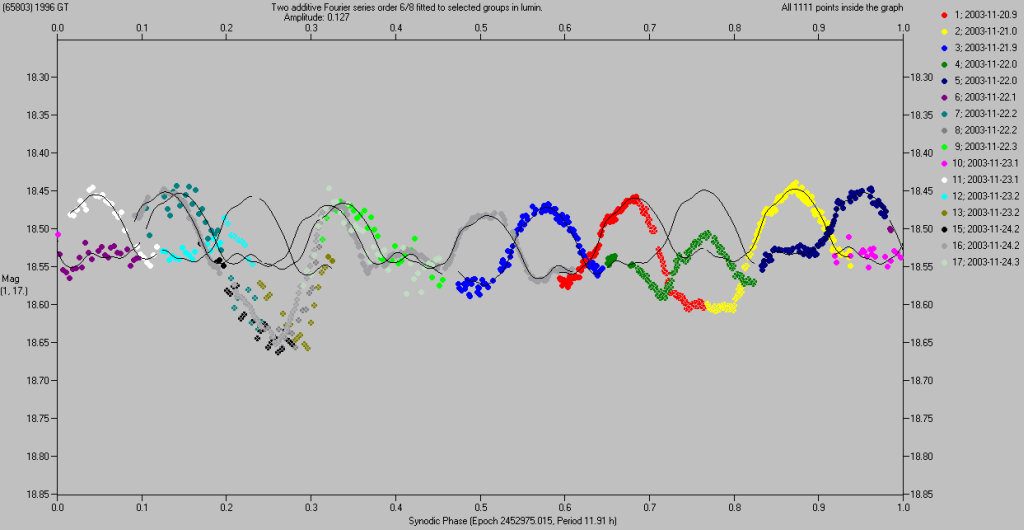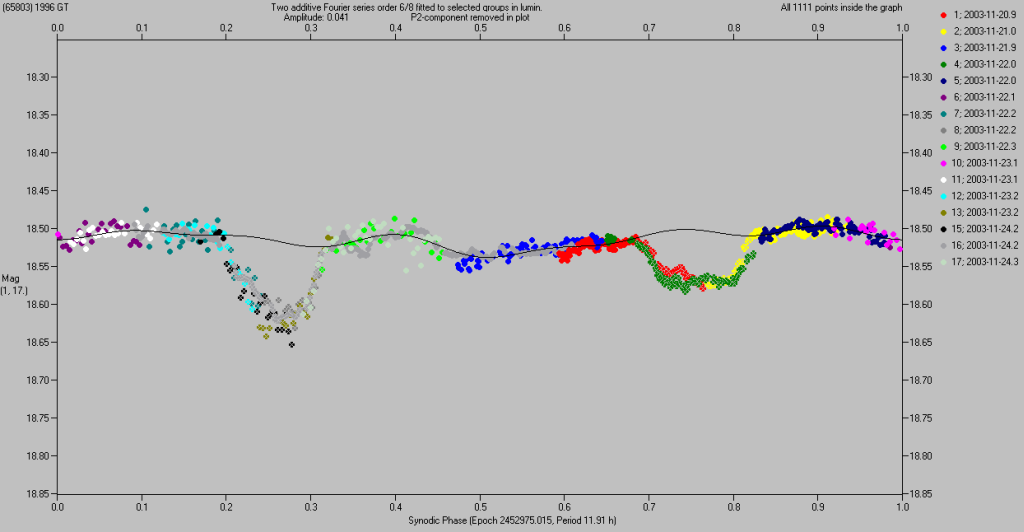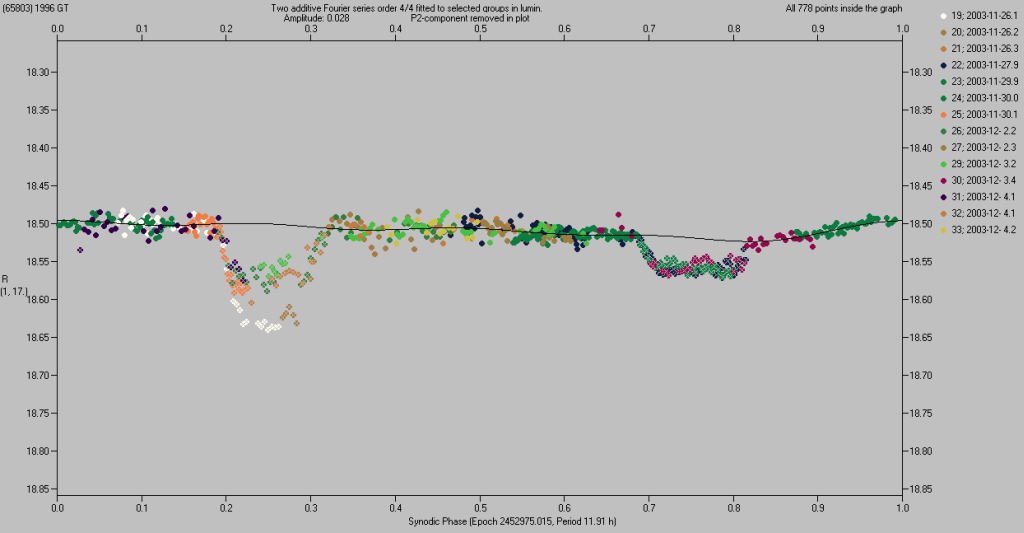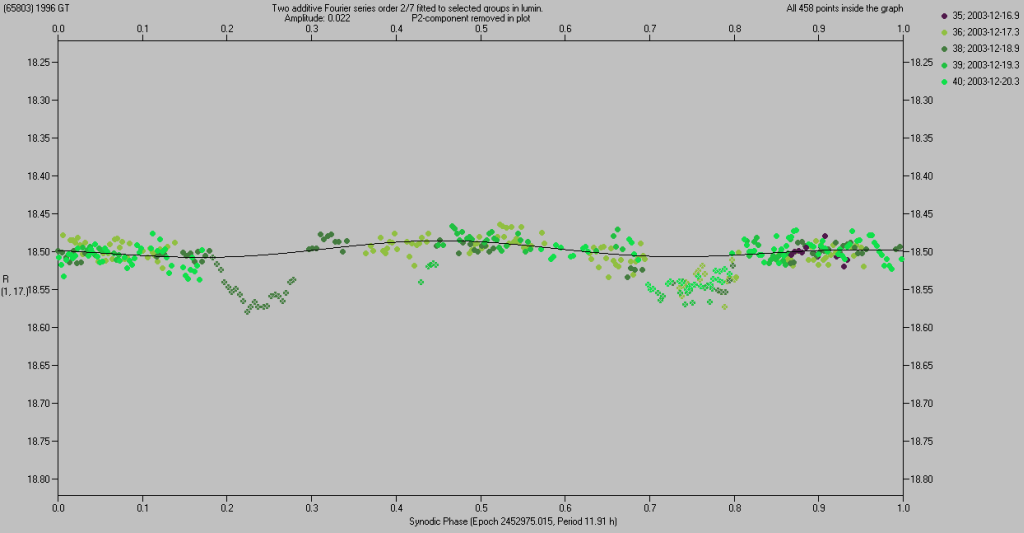Binary NEA (65803) 1996 GT
Updated 2004 May 14.
Orbit:
PHA,
q = 1.013 AU, a = 1.644 AU, i = 3.4 deg (MPO 53573)
Lightcurve observations made
from Ondrejov Observatory during 2003 Nov. 20.9 to 22.0,
from Carbuncle Hill Observatory during Nov. 22.1 to 24.3, and
Steward Observatory on Nov. 24.2
have revealed that (65803) 1996 GT is an asynchronous binary asteroid.
Independent confirmation of the binary has been made by the radar team
led by Lance Benner from Arecibo on November 23 and 24. Further photometric
observations have been during Nov. 26.2 - Dec. 27.2
from Carbuncle Hill Observatory, Ondrejov, Palmer Divide Observatory, and Brorfelde,
showing an evolving LC shape.
Estimated parameters of the binary system from the photometry:
Primary's rotation period (synodic): 2.2593 h +/- 0.0001 h
Amplitude of the primary's rotation lightcurve: 0.07-0.09 mag.
It indicates that the primary's shape is nearly spheroidal (assuming we had an equator-on aspect).
Orbital period (synodic): 11.91 +/- 0.01 h
Secondary-to-primary mean diameter ratio: 0.2 (error <0.1).
Semi-major axis of the mutual orbit - 1.5 primary diameters, assuming
primary's bulk density of 2 g/cm3.
The estimated parameters of the binary system are
similar to parameters of other known
binary NEAs.
(65803) is a record holder in that it has the shortest orbital period
of those accurately derived so far. It may be due to a low
mutual semimajor axis of the system, high bulk density of the primary,
or both.
Participating people :
Petr Pravec, Peter Kusnirak, Lenka Sarounova, Marek Wolf, Ondrejov Observatory
Don Pray, Carbuncle Hill Observatory
Brian Warner, Palmer Divide Observatory
Al Grauer and Steve Larson, Steward Observatory
Rene Michelsen, Kalle Augustesen, Gianluca Masi, Brorfelde Observatory
Fig. 1: Lightcurve data from 2003 Nov. 20.9 to 24.3 folded with the orbital period.
The data include rotational variations of the two bodies as well as their mutual
eclipse/occultation attenuation events.

Fig. 2: The same data as in Fig. 1 but with the primary's rotational
component removed. They show a low-amplitude rotational variation of the secondary (fitted with
the curve) and mutual eclipse/occultation attenuation events between the two components.

Fig. 3: Data taken from 2003 Nov. 26.1 to Dec. 4.2 showing the long-period (orbital+secondary) component
with the primary's rotational component removed. The primary event's shape showed prominent changes,
consistent with expectation for the phase angle evolution.

Fig. 4: Data taken from 2003 Dec. 16.9 to 20.3 showing the long-period (orbital+secondary) component
with the primary's rotational component removed. The primary event's shape has further evolved with changing
geometry.

Back to the Ondrejov NEO program page.



